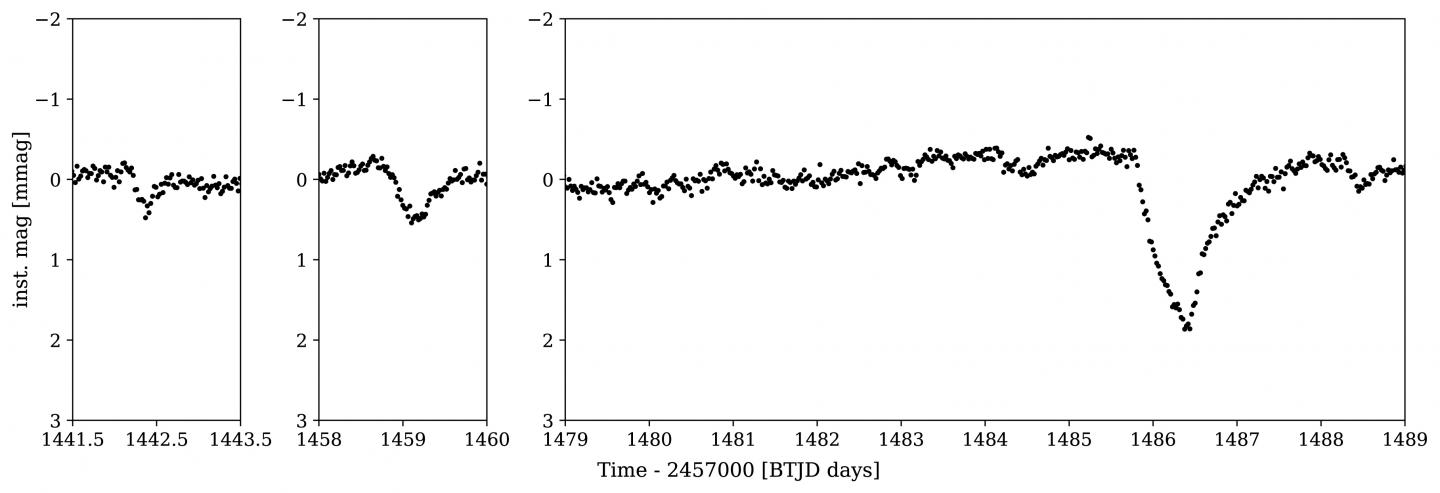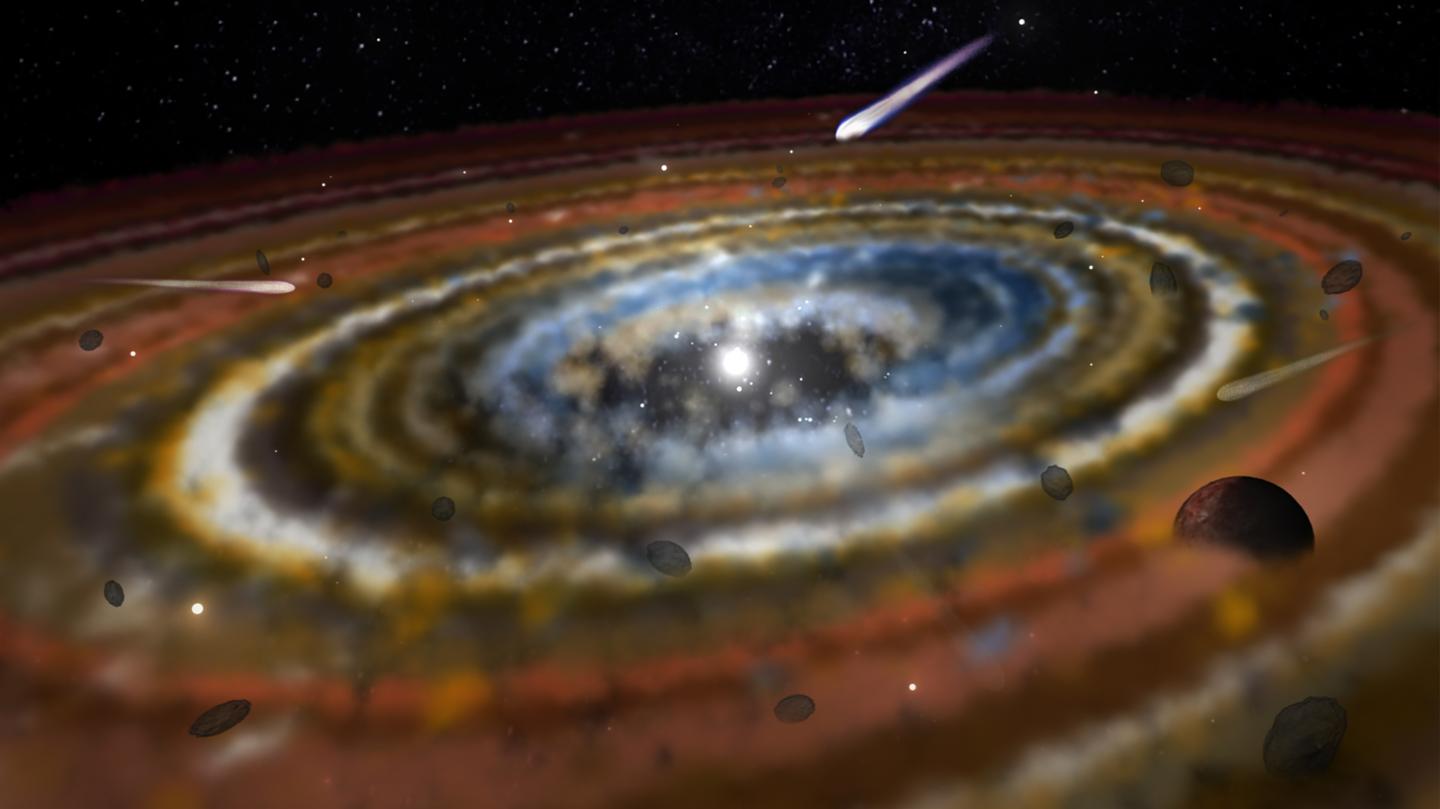Three exocomets discovered in orbit around Beta Pictoris
NASA’s satellite TESS is actually supposed to be searching for exoplanets. To do this, TESS records light curves of stars, that is, the change in brightness of a star over time. If something happens in a certain rhythm in these light curves, then there must be something there covering the star repeatedly – something like a planet. Or maybe a comet! TESS has apparently just discovered three of these in orbit around the nearby star Beta Pictoris.
Sebastian Zieba, a graduate student on a team led by Konstanze Zwintz at the Institute for Astrophysics and Particle Physics at the University of Innsbruck, discovered the signal of the exocomets when he analyzed the TESS light curve from Beta Pictoris in March of this year. “The data showed a significant decrease in the intensity of the star’s light. These fluctuations due to the darkening by an object in the star’s orbit can clearly be associated with a comet,» says Zieba, explaining the discovery published in the international journal Astronomy and Astrophysics.
Researchers have also already discovered exocomets in data from NASA’s recently discontinued Kepler mission. For TESS, astronomers hope to find significantly more exocomets, because the satellite also observes younger stars, around which comets are expected to be found more often. “The Kepler space telescope concentrated on older stars similar to the Sun in a relatively small area of the sky. TESS, on the other hand, observes stars over the entire sky, also including young stars. Therefore, we expect to have more discoveries like this in the future,” says team leader Konstanze Zwintz.
At around 23 million years old, Beta Pictoris is still a very young star. Because it is located only 63 light-years from Earth, it has already played a role in the search for exoplanets too. In 2008, a planet was found in its orbit using direct observations, but even “in the 1980s, observations of Beta Pictoris provided compelling evidence for planetary systems around other stars than our Sun – a decade before exoplanets were even discovered for the first time. In addition, at that time there was already indirect evidence for comets based on observations of a special form of gas evaporation that is characteristic to comets,” explains Konstanze Zwintz.
Comets are so small that their direct observation would be difficult. But they have very large, million-kilometer-long tails that make them detectable in the light curves – which is different from planets. However, the curves cannot reveal how large the comets are.

